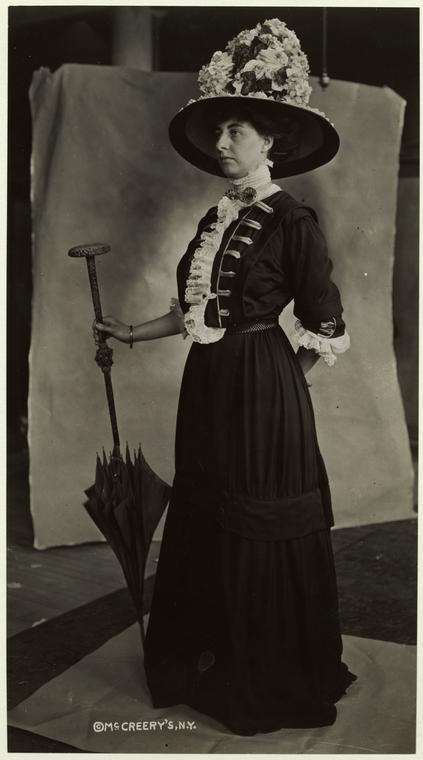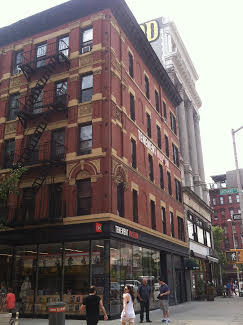Blog Archive
Staying Cool in Our Old Age
The Tenement at 97 Orchard Street may not be the oldest building in New York City (that title belongs to the Wyckoff Farmhouse Museum in Brooklyn built in 1652), but it is one of the oldest buildings to be preserved in its original condition. At the Tenement Museum, preserving our building can means preserving both the structure of the building and the historical conditions. We are devoted to making history accessible to our visitors, and this means we think about how to heat and cool our Tenement building without interrupting the visitor’s experience of stepping back in time.
Of course, this can get pretty uncomfortable, so we have invited experts at Henry & Watson Associates to visit the Museum to consider the ways in which we can make sure our visitors, and the building, stay safe and comfortable. They identify standards that codify human comfort in interior environments as ANSI/ASHRAE Standard 55-2010 Thermal Environmental Conditions for Human Occupancy. Resources like the ASHRAE are compiled and updated by scientists and engineers who focus on maintaining comfortable temperatures in human environments. Architects and contractors can consult the ASHRAE to find, for instance, that at 76.2 to 88.8 degrees 80% of people are comfortable and at 78 to 87 degrees 90% of people are comfortable.
There are a number of factors that make the visitors more or less comfortable in the building.

Women in New York across all levels of income and occupation wore much heavier clothing in the eras before air-conditioning. This photograph shows fashions from 1910. Photo courtesy of the New York Public Library.
One of these considerations is fashion! Are our visitors wearing cool, light clothing? This freedom of dress is a relief that most Americans enjoy in the summer without thinking about it. Imagine what some of the original residents of 97 Orchard Street would have been wearing in the hottest summer months! 100 years ago, men and women wore more conservative clothing than we do today, like long skirts and full suits. Talk about suffering for fashion!
The paces at which visitors move through the building on hot days can also affect how comfortable they are in the building; minimizing physical exertion help everyone keep cool. Tell that to Jenny Levine and Bridget Moore, who carried buckets full of water up the four flights of stairs many times a day!
Modern conveniences are not always as convenient as they seem. The transition from an air-conditioned building to an un-air-condtioned one like ours (more on that later) can change the way our visitors feel. The human body is highly adaptive and visitors coming from our air-conditioned Visitor’s Center or an air-conditioned train will have adjusted to that cooler temperature; these visitors might actually be more uncomfortable than someone who has been out in the heat. This is not something the original resident would have worried about!
But what solutions can we consider to keeping 97 Orchard Street cool and historically authentic in the summer time? One obvious possibility is air-conditioning: while we are all glad to have them in our homes, window air-conditioners would look out of place in the Rogarshevsky apartment from 1910. Beyond aesthetics, air-conditioners have structural implications for the health of the building. Modern Heating, Ventilation and Air-conditioning systems would certainly damage the fabrics in the building and put other materials at risk. Some aspects of our old building are very sensitive to moisture and lowering the temperature with air-conditioning can increase the humidity in the building. The process of lowering the internal temperature upsets the moisture equilibrium and invites in outside moisture which could opens the building to risks from mold growth to salt accumulation which eats at our carefully preserved historic finishes.
The research that Henry & Watson conducted in the building has led them to pioneer a creative multidimensional approach to our very special considerations. Using light blocking blinds during the day kept the building at a comfortable temperature. In fact, some have said The Tenement is so Hot Its Got To Have Shades. Currently we have also installed small, but efficient, electric fans the apartments that keep air circulating through the building.So what can we do to make everyone as comfortable as possible all summer? Their long-term plan includes a centralized climate-monitoring system allowing our educators to make up to the minute adjustments necessary to tours and schedules. Future measures will also include a new ventilation system, designed specially for the Tenement building which will help control temperatures and humidity. Best of all, we have a very ancient cooling system which we happily share with all our visitors – fans!

An example of ultra-modern passive architecture which attempts to exist without a carbon footprint. Photo courtesy of ArchitekturWerkstatt Vallentin via Dwell Magazine.
They say that everything old is new again, and in many ways our historic building is actually on the cutting edge of environmental technology! As engineers and architects contend with rising carbon emissions worldwide, the most creative buildings are often those which stay cool without mechanized cooling systems like air-conditioning. These buildings make use of what is called “passive design,” which mostly means being thoughtfully old-fashioned. Examples of passive design would be covering a path with white stones instead of cement, which make a building cooler in the summer, or having southern facing windows, which make a building warmer in the winter. So next time you’re a little warm in our historic building, remember we are also at the forefront of modern engineering.
–Posted by Julia Berick. Special Thanks to Henry & Watson Associates and to David Favaloro, Director of Curatorial Affairs at the Tenement Museum.

